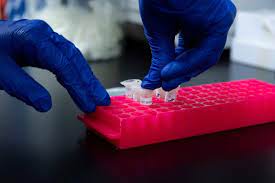WASHINGTON (AFP): Their stories are divided into before and after. First, those long years of pain which flooded every moment — school, relationships, work. And then — after agonizing treatments — what felt like the miracle of life after sickle cell disease (SCD).
Two Americans whose lives were turned around by newly approved treatments tell AFP they want others to benefit too. But the eye-watering cost — up to $3.1 million per course of treatment — could limit access for other patients.

Tesha Samuels was born in 1982 — just before the invention of prenatal screening for SCD, an inherited red blood cell disorder. SCD affects around 100,000 people in the United States and some 20 million worldwide. Most people with the condition are Black.
Scientists say this is because the sickle cell trait evolved to protect people exposed to malaria, so the risk of SCD is higher. Those with the disease have abnormal haemoglobin — the molecule that carries oxygen — making their red cells hard and C-shaped like sickles. Complications include anaemia, bouts of extreme pain, organ damage and early death.
Tesha was diagnosed aged two and recalls a childhood in and out of hospital. At seven, she suffered a life-threatening case of anaemia and then aged 13 she had a stroke which led to monthly blood infusions. Tesha said “the stigma of a Black child going to the hospital saying they’re in pain” made her wait until things got unbearable.
As a young adult, Tesha saw the disease.



















